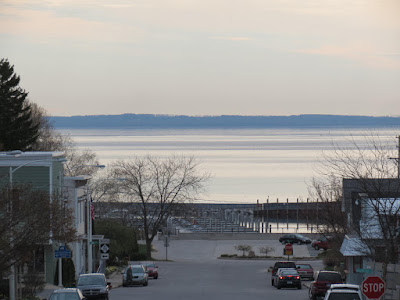It’s
practically unthinkable that anyone in northern Michigan would not know the
name – and the work – of Anne-Marie Oomen. Her poetry, plays, magazine essays,
and especially her books of memoir have long established her as a distinctive
northern voice. Her place and time come through in everything she writes, and
her writing is both lyrical and accessible.
Elsewhere,
a couple years ago, I addressed the question “What were the Sixties (really)
like?” I will not repeat what I wrote then, but if you missed the earlier post,
you might want to go back and read it, and after you do, you’ll be even more
ready to dig into Anne-Marie Oomen’s latest book.
Love,
Sex, & 4-H
– the title alone spoke to me! Oomen joined 4-H early, at age 8, when her mother
became a group leader. The oldest child in her rural farm family, little Anne-Marie
sought in 4-H an escape from farm animals! My exclamation mark is very
personal, because I joined 4-H in upper elementary school hoping that
membership would be Step #1 to horse ownership. It wasn’t. (No one explained to
me that ours was an “urban” club rather than a farm club.) The sewing projects
through which Oomen progressed over the years, going all the way to fashion
modeling at Michigan State University, left me cold. I stopped early on, with
the horrid gathered skirt requirement. Ugh! I did not stay with 4-H past grade school. But I loved the Head, Heart, Hands
& Health pledge. Anyway, enough about me....
As
Oomen tells the story of her adolescent years, political awareness was far from
her life. The larger world intruded only with time-stopping events; otherwise,
clothes and boys dominated her personal Sixties consciousness. As I have said
many times, the Sixties were different for everyone who lived through them.
Here were sex and love dressed in church clothes, shirt collar just starting to unbutton—utterly seductive, surreptitious as snakes. Except for the fierce familial love of my people, I had no authentic understanding of either of those lunatics, love and sex, as they were expressed in that time. But I had 4-H, and, because of that, I knew this much: I knew how love and sex would be dressed.
Oomen’s experience in the Sixties, then, is not the story of a young radical in the making.
Questions about love and sex, however, have come to young men and women in
every historical decade of American life, regardless of any larger political
context, and they always will. Oomen’s story, while hardly remarkable in itself,
is told with remarkable frankness, and that, along with her always beautiful
writing, is its strength. She neither paints her adolescence in false colors
nor glosses over occasional petty, even shameful behavior. It’s all there, from
the first stirrings to the slippery “everything but” slope.
Oomen
might have subtitled this book A Memoir of the Sixties, since it covers the
decade 1959 to 1969, her life from age 8 to age 18, and it is very much a young
Michigan farm girl’s coming of age in that decade when ordinary adolescent
turbulence took place in a larger national context of social turbulence. Of the
three memoir books she has written – the first two were Pulling Down the
Barn,
stories of her rural northern Michigan family, and House of Fields, telling of her
educational journey – Love, Sex, & 4-H does the most to situate one girl’s
experience in a larger perspective. Oomen has many readers who did not grow up
on farms or attend one-room schools, but all of us either lived through or (for
the younger readers) have known from the classroom the major events of the
1960s. We have all, too, lived through teenage confusions, hopes, and fears,
trying to redefine in those years our roles as sister, daughter, friend, and
girlfriend (or, for boys, obviously, brother, son, friend, and boyfriend).
New
readers are still discovering Anne-Marie Oomen’s book for the first time. Two
young women came by chance to the bookstore on Tuesday afternoon, and, urged by
Anne-Marie and her Northport bookseller, also attended the author’s formal
presentation at the Leelanau Township Library the same evening. One of them was
about to embark on an M.F.A. program in creative writing; both were excited to
be able to meet and “hang out with” such an accomplished book author. They
planned to return to their campsite and read Uncoded Woman aloud around the
campfire. “You have to read the poems in order,” I cautioned them. “No skipping
around, because there is a narrative.” Anne-Marie took over then and told them
something about the protagonist of the poems and the maritime signals that name
each poem.
Besides
memoir, essays, and poetry, Anne-Marie Oomen has written seven plays for the
stage, only one of which I have seen performed – and that one much too long
ago. It told the story, all in verse, of farm women in the area now part of
Sleeping Bear National Lakeshore. The power of the drama, very minimally
staged, surprised and moved me. I want to see it again.
What
a privilege and joy it was to spend hours on Tuesday with writer Anne-Marie
Oomen! Even without paid vacation or sick leave, there are some very tangible
benefits to this bookselling gig. I have the pleasure of introducing my writer
friends to one another, bringing writers to readers, and, always, enjoying my
small place in American literature’s northern territory.
























